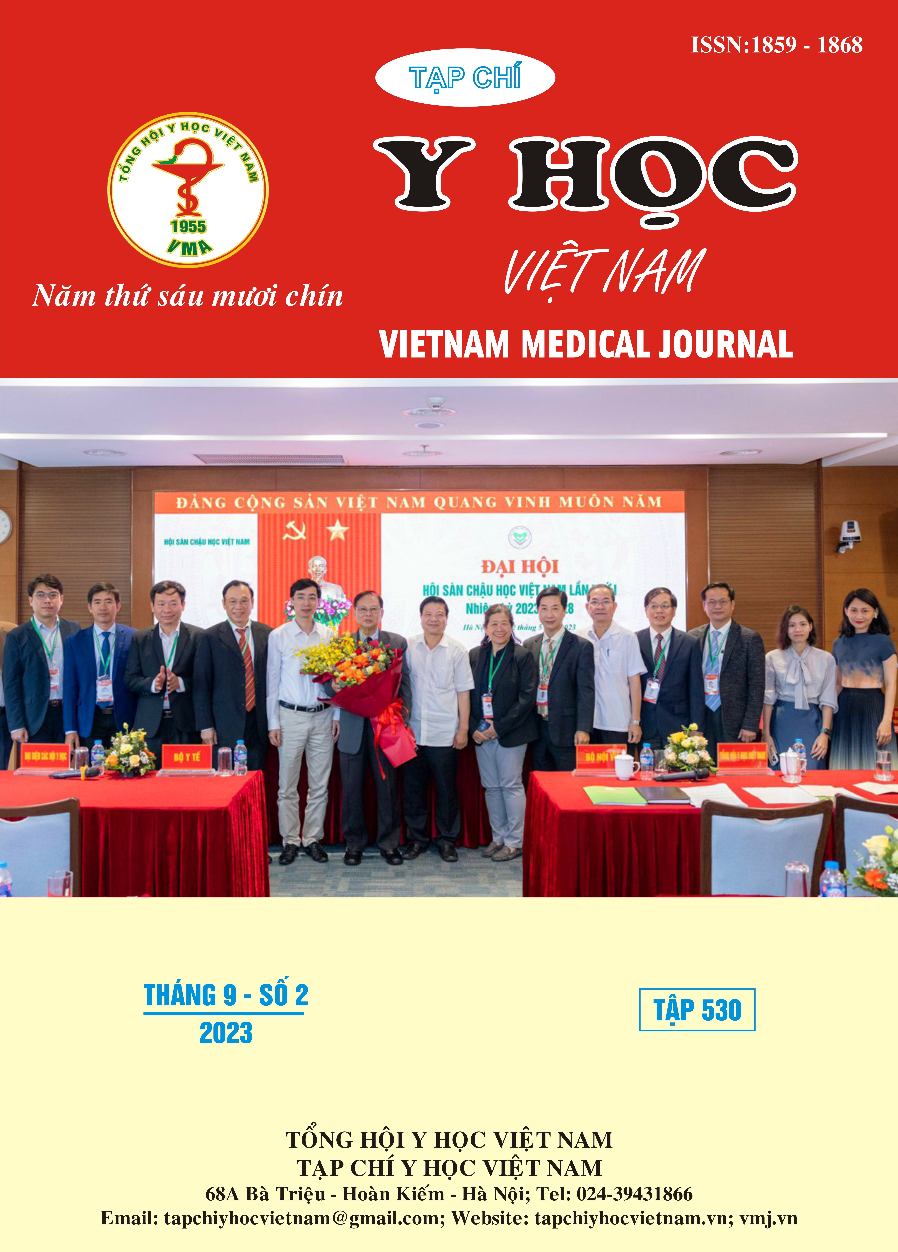1,064-NM PICOSECOND ND:YAG LASER IN TREATING MELASMA
Main Article Content
Abstract
Objective: To assess the clinical efficacy of the 1064nm Nd:Yag picosecond laser in treating melasma. Methods: Descriptive study of a series of cases, longitudinal follow-up on melasma patients assigned to be treated with a 1064nm Nd:Yag picosecond laser at the Department of Dermatology - Skin Aesthetics, University of Medicine and Pharmacy Hospital in Ho Chi Minh City from August 2021 to August 2022. Results: The average age of the patients was 44.9 ± 6.7%; all patients were femal. The majority of patients (61.1%) had neither a family history of hyperpigmentation nor a history of hyperpigmentation during a previous pregnancy. In the study, 55.6% of patients regularly wore masks, and 55.6% wore masks with light colors. In terms of sunscreen use, only 55.6% of patients regularly applied sunscreen. In the group of patients who used sunscreen, 66.67 percent correctly applied the product. Before treatment, the classification of hyperpigmentation severity revealed that 5.6% of cases were mild, 16,7% were moderate, 22,2% were severe, and 55,6% were very severe. Index L, b, as measured by Colorimeter, increased statistically significant with each treatment (p<0.05), whereas index a change was not statistically significant. In addition, the indices of Spots, Brown Spots, and Porphyrins increased statistically significantly with p<0.05 when evaluating the effectiveness of VISIA treatment. The Melasma Area and Severity Index (MASI) decreased significantly with p<0.001 following each treatment. No patient did not experience improvement following the initial treatment. With each treatment, the Melasma Quality of Life (MELASQoL) score decreased, with P<0.001. 50% of participants in the study reported no subjective or objective adverse effects. The subjective side effects noted in the study were stinging (33.3% of participants) and itching (16.4% of participants). The only reported objective adverse effect was erythema (50%). Conclusion: 1064nm Nd:Yag picosecond laser can be a safe and effective method for melasma treatment.
Article Details
Keywords
melasma, 1064nm Nd:Yag picosecond laser.
References
2. Choi YJ, Nam JH, Kim JY, et al. Efficacy and safety of a novel picosecond laser using combination of 1 064 and 595 nm on patients with melasma: A prospective, randomized, multicenter, split-face, 2% hydroquinone cream-controlled clinical trial. Lasers in surgery and medicine. Dec 2017;49(10):899-907. doi:10.1002/lsm.22735
3. Liang S, Shang S, Zhang W, et al. Comparison of the efficacy and safety of picosecond Nd:YAG laser (1,064 nm), picosecond alexandrite laser (755 nm) and 2% hydroquinone cream in the treatment of melasma: A randomized, controlled, assessor-blinded trial. Frontiers in medicine. 2023; 10:1132823. doi:10.3389/fmed.2023.1132823
4. Rivera PZM, Hagel LI, Rivera PIM, et al. Efficacy of Nd:YAG laser treatment on the reduction of enlarge pores. Med Cutan Iber Lat Am. 2017;45(2):101-106.
5. Chen YT, Lin ET, Chang CC, et al. Efficacy and Safety Evaluation of Picosecond Alexandrite Laser with a Diffractive Lens Array for Treatment of Melasma in Asian Patients by VISIA Imaging System. Photobiomodulation, photomedicine, and laser surgery. Sep 2019;37(9):559-566.doi: 10.1089/photob.2019.4644
6. Feng J, Shen S, Song X, Xiang W. Efficacy and safety of picosecond laser for the treatment of melasma: a systematic review and meta-analysis. Lasers Med Sci. 2023;38(1):84. Published 2023 Mar 10. doi:10.1007/s10103-023-03744-y
7. Wong CSM, Chan MWM, Shek SYN, Yeung CK, Chan HHL. Fractional 1064 nm Picosecond Laser in Treatment of Melasma and Skin Rejuvenation in Asians, A Prospective Study. Lasers Surg Med. 2021;53(8):1032-1042. doi:10.1002/lsm.23382
8 Lee SY, Kim HR, Park JS, et al. The Efficacy and Safety of a Low-Fluence 1064 nm Picosecond ND-YAG Laser Compared with Those of a Low-Fluence Photoacoustic Therapy Pulsed (PTP) Mode 1064 nm Q-Switched ND-YAG Laser for Treatment of Melasma: A Prospective Split-Face Study. Dermatologic Therapy. 2023/06/26 2023;2023:5961152. doi:10.1155/2023/5961152


